
A New York Times report on the tragic passing of a Brooklyn bar owner recklessly implied Fox News’s coverage of the Wuhan coronavirus contributed to the man’s untimely death. Worse yet, the report was authored by a woman who expressed skepticism over the magnitude of the crisis during the same time period her story faulted Fox.
In an April 18 story on the death of beloved Bay Ridge bar owner Joe Joyce, Times writer Ginia Bellafante included the following passage (emphasis added):
Early in March Sean Hannity went on air proclaiming that he didn’t like the way that the American people were getting scared ‘unnecessarily.’ He saw it all, he said, ‘as like, let’s bludgeon Trump with this new hoax.’
Eventually, Fox changed course and took the virus more seriously, but the Joyces were long gone by then. A spokeswoman for Fox News said that Mr. Hannity made statements taking the spread of coronavirus seriously early on, and that his comment about the public being scared by the coverage happened after the Joyces had left on their cruise.
“But the Joyces were long gone by then” is some heavy-handed narrative spinning. The obvious implication is that Fox’s alleged shift in coverage came too late to properly convey the threat to Joyce. According to Bellafante, Joyce left New York for a cruise to Spain on March 1. “He watched Fox, and believed it was under control,’’ his daughter told the writer.
Here’s where the blame game takes an even more unfortunate turn. In the days before Joyce departed, as late as Feb. 27, Bellafante herself was downplaying the gravity of the virus. In response to a post about market losses, the Times writer tweeted, “I fundamentally don’t understand the panic: incidence of the disease is declining in China. Virus is not deadly in vast majority of cases. Production and so on will slow down and will obviously rebound.”
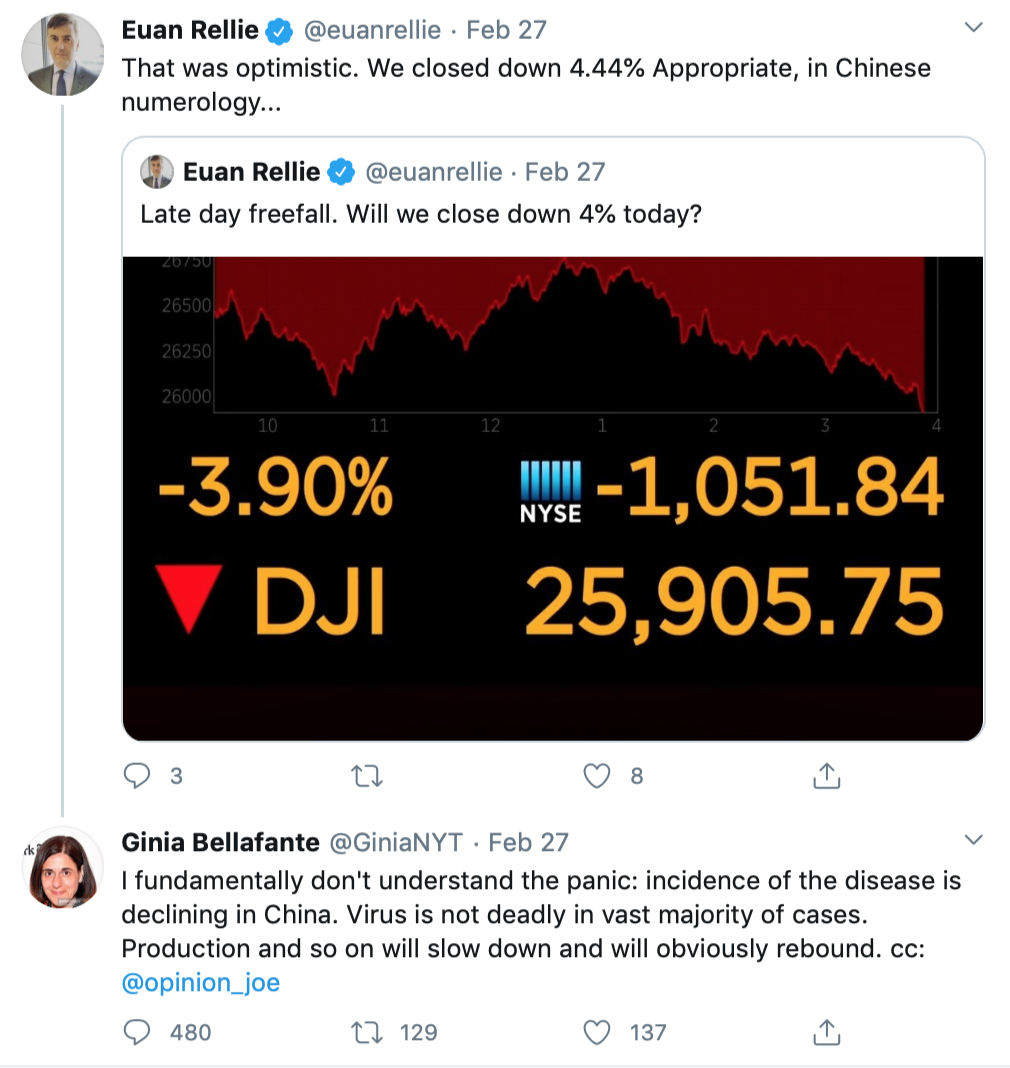
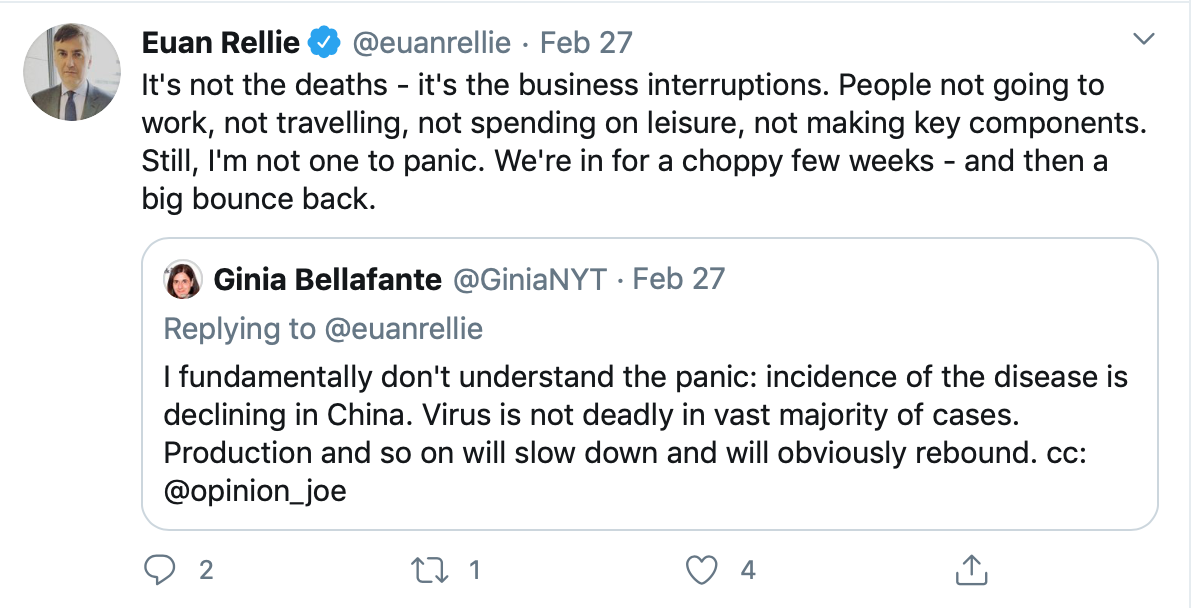
The same day, Bellafante liked a tweet from investment banker Euan Rellie that said, “I’m not one to panic. We’re in for a copy few weeks – and then a big bounce back.” On Monday, after people noticed the discrepancy between Bellafonte’s Feb. 27 tweet and her April 18 story, Rellie tweeted to say her post “was reasonable at the time, and remains correct.” Bellafante liked his tweet.
Siri … why has trust in media declined? pic.twitter.com/iPzjpfADXP
— Jon Levine (@LevineJonathan) April 19, 2020
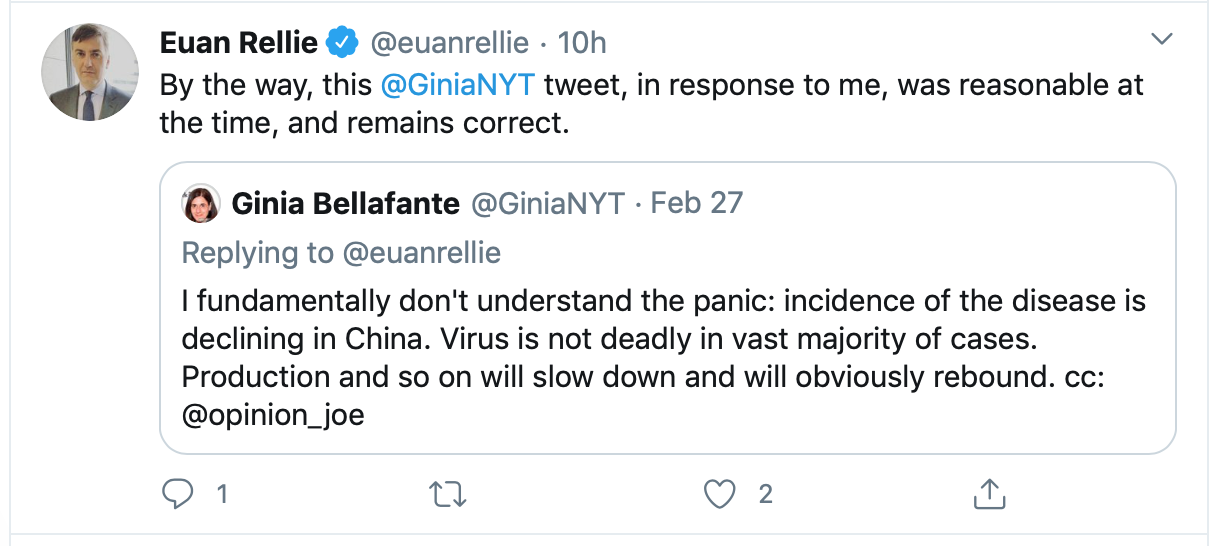
On March 4, three days after Joyce left for his trip, Bellafonte retweeted a post that encouraged people to “go out and have a nice meal” in Chinatown and other neighborhoods. On March 7, she retweeted an article from Food & Wine lamenting that “the COVID-19 panic and the xenophobia it has engendered may very well spell the end of Chinatown as we know it.”
The post was headlined “Chinatown Needs Your Love More Than Ever Right Now.” It stated, “We need to be there regularly, supporting the restaurants and all the small businesses and cultural institutions in any way we can.”
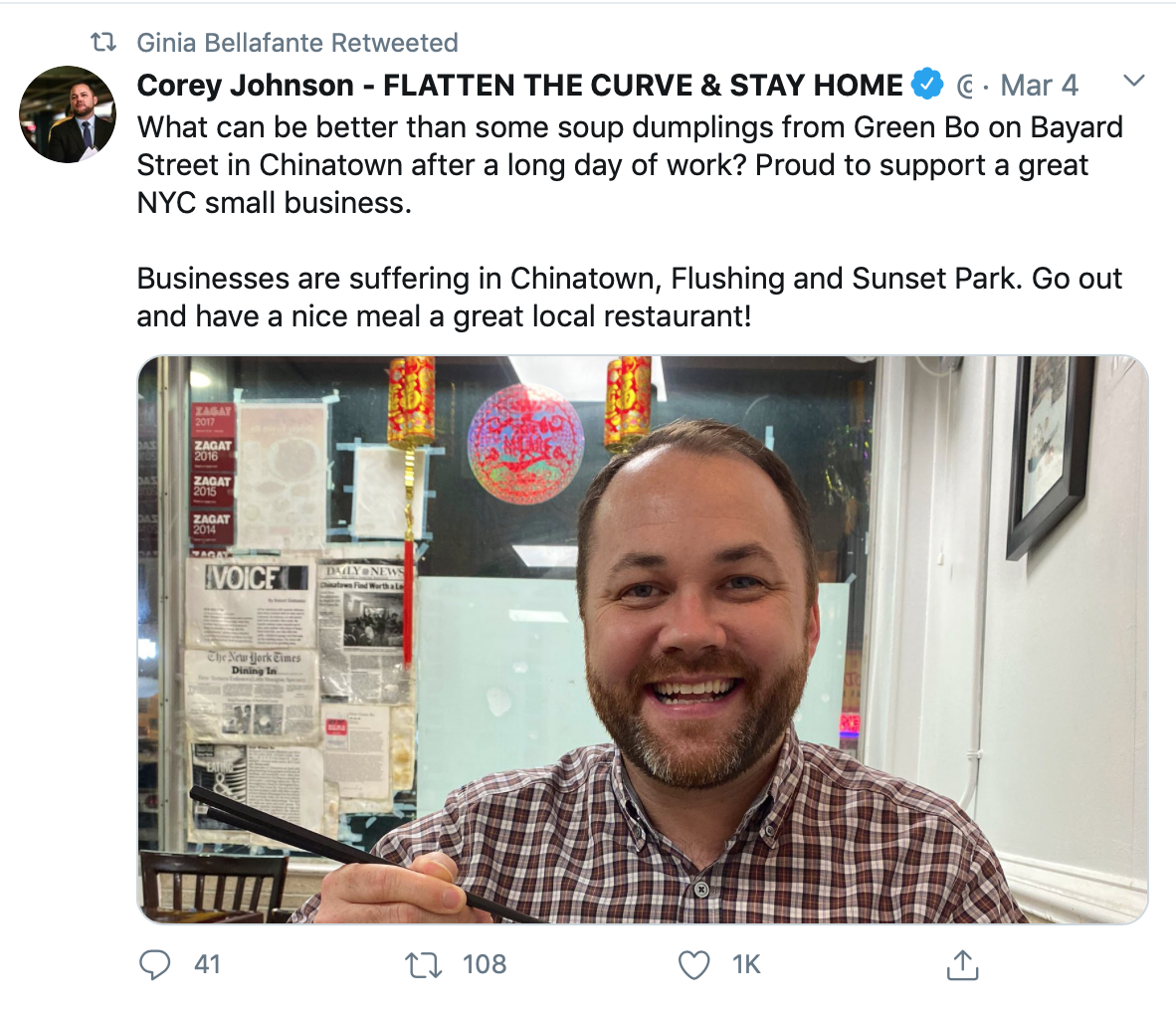
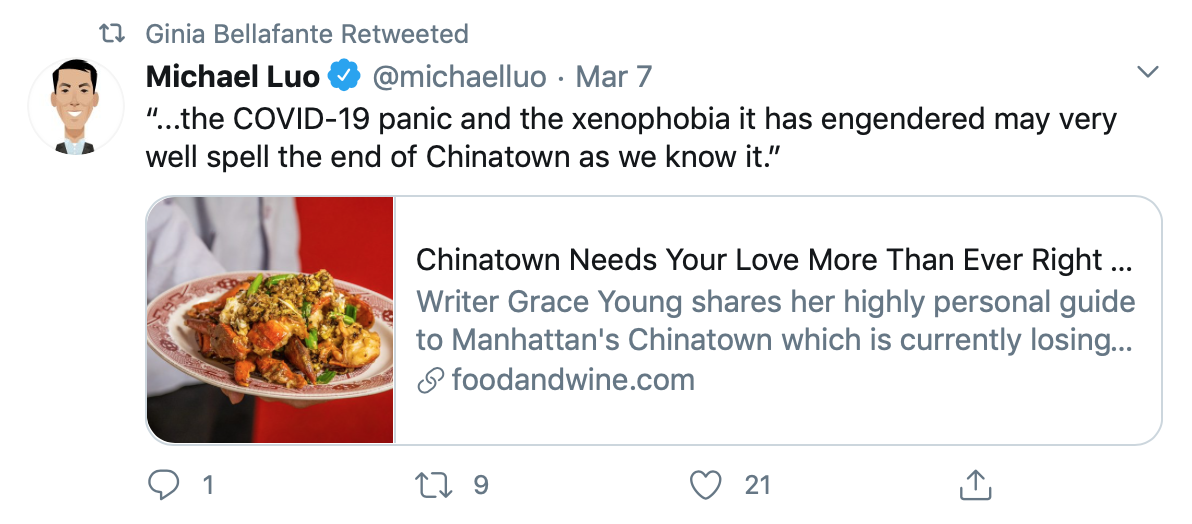
The Times story also misses some of the nuance in Sean Hannity’s coverage. If we journey back to Feb. 27, while Bellafante was publicly expressing skepticism, Hannity argued Democrats were “fearmongering” over the virus, but also clearly said, “Make no mistake. Coronavirus is dangerous. Those infected are contagious before they show symptoms. They don’t know they have it. The rapid spread is concerning.” Recall that more than a week later, Bellafante was still retweeting messages encouraging people to go to Chinatown.
Should this strike you as fruitless hairsplitting, bear in mind that corporate media institutions from the New York Times on down need to evaluate their failures at covering the virus. There’s also a reflex on the left to smugly point the finger at conservative media for downplaying the virus that conveniently overlooks their own skepticism during the same time period. That makes coverage like Bellafonte’s story on Joyce, which coyly suggested Fox News was partially at fault for his death, particularly egregious.
On March 26, Bellafante liked a tweet that said, “On your pessimistic days, you should remember 3 months ago you would dismiss the idea of the world being locked down with a pandemic. Extrapolating from your own poor record of forecasting you should realize that your own forecast of future gloom may also be completely wrong.”

Such a realization would have been nice in Bellafante’s own work. Singling Fox News out is not based on a fair or accurate encapsulation of the media climate of the time, and Bellafante is Exhibit A. As the crisis mounted, even media elites’ perceptions were all over the map. It’s not helpful to gloss over that.
More importantly, our prayers are with Joyce’s loved ones at this time.
This article has been updated to correct Ginia Bellafante’s last name.









